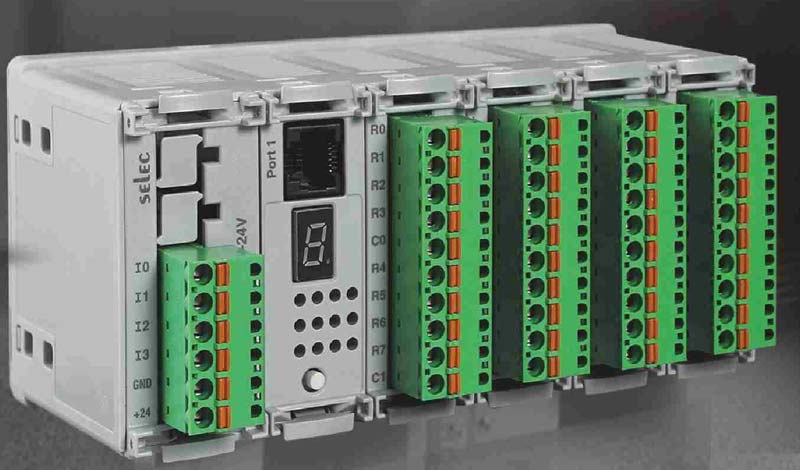What is a Programmable Logic Controller and What is it Used For?
26 May, 2020 | Industrial, Industrial Manufacturing, Industrial Engineering, #PLC, Programmable Logic Controller, Factory

Programmable logic controllers are computers outfitted with the latest AI technology that allows them to analyze data and adjust a machine or process independently. When PLCs were first introduced to the industry, it was a revolutionary technology that irrevocably changed how the industry worked. Today, PLCs are integral to industrial automation, and, as technology advances, the AI becomes smarter and faster.
PLCs are used to monitor inputs and outputs of a machine and then use artificial intelligence (AI) to make logic-based decisions for the machine or other automated processes. Put differently, PLCs work by using sensors connected to a machine to extract the influx (inputs) of data. After analyzing the information, the PLC triggers related outputs within pre-designated parameters.
The solid-state computers were first developed in the 1960s to rival the relay logic systems of the day. Relay-based systems frequently failed, which created delays in the industrial process because the operators had to troubleshoot a wall of relays instead of only one control panel.

How are the systems used in the industrial automation field?
Programmable logic controllers are the ideal option for controlling automation in an industrial setting. PLCs are flexible, provide advanced features and benefits, and are adaptable to nearly any setup or application.
In the industrial automation field, PLCs eliminate human error, lower overhead costs, save processing time, and have increased performance over manned operations. Programmable logic computers are designed as standalone units that automate an entire process and monitor the machines and functions involved. Operators can program PLCs to control multiple sensors and machines and tell them to execute pre-designated commands.
PLCs are currently changing today’s industrial automation operations by offering a faster, more streamlined option for automation than older relay-based systems. Since the 1960s, programmable logic controllers have provided a smaller and more seamless integration with industrial automation, improving operations while saving time and money.

What are the advantages of programmable logic controllers?
- Independent automation: PLCs can independently automate a process, machine function, or a production line.
- Easy installation and troubleshooting: PLCs are designed to install faster and more simply than hard-wired relay-based systems.
- Cost-effective: Large-scale production of control panels makes PLCs less expensive than other controllers and relay-based systems.
- Simulation: PLCs come with default functions for advanced simulation.
- Maintenance: Maintenance cost is low compared to systems using a relay-based micro-controller setup.
- Run-time data: Operators receive information, including machine productivity and operating temperature.
- Rugged: PLCs are designed to survive less than ideal conditions like extremely high and low temperatures, dust, and moisture.
How will programmable logic controllers affect the future of industrial engineering?
PLCs are continually evolving, and engineers are meeting the demand for smoother operation by advancing the technology. While PLCs have been around since the late 1960s, there is still room for improvement, and the future of PLCs promises smaller, faster, more advanced, and lower-cost solutions to automation.
Solid-state memory costs and sizes are decreasing, making them more accessible for installation in PLCs, specifically lower-end controllers. Solid-state memory provides increased local data storage, allowing operators to install PLCs in processes that traditionally require expensive data acquisition systems.
Another future advancement is the integration of enterprise resource planning (ERP) on the factory floor. In the past, extracting machine and process data was a monumental task. Future advancements will include needed functions and features to simplify the extraction process.
PLC manufacturers are developing solutions where the PLC controls the application and provides the tools to manipulate, extract, and send data to the operators who require it. This will streamline data mining and the industrial automation process overall.










